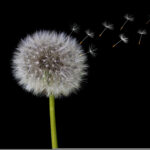My beautiful, sweet daughter is without a doubt in the full throes of pre-puberty! In between her ten-and-a-half-year-old giggles and love for her favorite stuffed unicorn are obvious snaps of anger and volatile moods. She’s changed from wearing a slip to a half-slip bra to cover her growing breast buds, and I’ve recently noticed teeny pimples on the sides of her nose. I recognize these tell-tale signs as the stirrings of estrogen and other female hormones. In a few years she will enter into womanhood.
According to Samkhya philosophy, Shakti (Prakruti) carried the universe hidden in avyaktam (unmanifested form) and transformed primordial matter through her divine powers of creation into the magnificent cosmos. In Charaka Samhita Sharira Sthana, there is a similar verse describing the unmanifested state of womanhood which lies within a female child from the time of conception, and burgeons at precisely the right moment in time. It makes perfect sense that the Sanskrit word, ārtava, referring to female reproductive tissues, also denotes that which belongs to a particular time period (ritu). This timing is determined by the hypothalamic-pituitary-ovarian axis which regulates hormones that signal the start of puberty. As ārtava is the upadhatu (subsidiary tissue) of rasa dhatu, normal menstruation directly results from healthy rasa dhātu.
Like the multiple petals of a beautiful flower (pushpa), which a budding maiden blossoms into, the samhitas use multiple Sanskrit words, in addition to ārtava, when talking about menstrual blood or the ovum including śonita, asrk, rajah, and rakta. It has a predominance of agni mahabhuta. The quantity of ārtava is specified as four Anjali – about 35 mL (A.H. Sharira Sthana 3/81). This falls within the range of 10 to 80 mL for menstrual volume per modern medicine. The color or menstrual blood is described in the samhitas as various shades of red, such as the color of the gunja fruit (Abrus precatorius), a red lotus (pinkish-red), or the indragopaka insect (a darker shade of red). Acharya Sushruta said, healthy menstrual blood does not stain a white cloth and can easily be washed out (Su.Sa. Sharira Sthana 2/17). It also has a typical odor (A.H. Sharira Sthana) that may even smell like honey in some females (Ma.Ni. 61/7). Finally, healthy menses is consistent, lacks sliminess, is moderate in quantity lasting 3 to 5 days, and does not cause burning or pain when it flows.
The typical menstrual cycle is 21 to 35 days long with an average of 28 days and is divided into three phases according to Ayurveda, which is consistent with modern medicine:
Phase 1: Rajah kala – Menstrual Phase
The blood collected in the preceding month in the uterus (garbhashaya) and the endometrial vessels (artavavahi dhamani) flows downwards to the vagina, carried by apana vayu; rajah lasts 3 – 5 days
Phase 2: Ritu kala – Follicular/Ovulatory Phase
Following menstruation, the endometrium starts to proliferate again, in preparation for possible conception. As per Ayurveda, the female looks healthy and bright with moist mouth and teeth, eyes and hair soft and relaxed, twitching over the breasts, pelvis, thighs, and desirous of sexual relations. These are all caused by the effects of estrogen predominance during this stage which lasts up to the 12th or 16th day.
Phase 3: Ritavatita kala – Secretory/Luteal Phase
The yoni (cervix – specifically the cervical mucus) does not promote entry of sperm (shukra) into garbhashaya (the uterus) due to the influence of progesterone. Pitta dosha is high in this phase, bringing heat and causing the vasculature and glands in the endometrium to change. These changes last up to day 28 or so.
Ayurveda emphasizes menstruation as a noteworthy life event for every female. In different regions of India, communities celebrate menarche with much pomp! In Odisha, the transition is celebrated as a festival called Raja Parba. In Kerala, in a ceremony lasting 5 days, called Thirandukalyanam, the girl is given a massage with coconut oil followed by cleansing with vaka (Royal poinciana) flowers; a priest also performs a purification ritual. In Karnataka, the girl is celebrated with a half-sari festival. She is bathed and cleansed, given fruits, saris and jewelry as gifts, and showered with blessings in a women-only ceremony. Finally, in Andhra Pradesh, girls undergo a Peddamanishi Pandaga ceremony for 5-7 days. They are kept in a separate hut with a mattress and utensils and given nutritious meals. On the last day of her period, she is bathed by 5 women excluding her mother, dressed in a silk sari, and adorned with jewels. Many other rituals are carried out by different states in India, all in celebration of the importance of fertility and menarche in a girl.
As with all areas, Ayurveda also gives importance to preserving the health and preventing disease of the reproductive tract because having healthy progeny depends on it. To do this, a special diet and lifestyle routine are recommended during the menstrual phase, called rajaswala charya. The menstruating female should refrain from sexual intercourse and remain chaste during this time. She should also avoid daytime sleep, oil massage, vigorous exercise, and excessive laughing or talking. Food intake should be light and easy to digest, such as rice, barley, and vegetables with small amounts of ghee and milk (A.H. Sharira Sthana 1/25). Avoiding activities and foods which vitiate vata is advised to maintain healthy apāna (outflow) and the normal physiology of menstruation.
When the time is right, I plan to celebrate the beautiful transformation and coming of age for my daughter. It’s not easy to protect her from the onslaught of high calorie fast foods and sugary-chocolatey- processed ‘foods’ that kids find so attractive to consume, while explaining ‘why’ so that she develops her own sense of right and wrong. But, at the same time creating a sense of belonging among her friends and the culture we live in. I hope she will be spared the menstrual irregularities which are so common among young girls and decides not to take hormones that mess with her metaphysical aura. I also pray she does not decide look upon her period as a curse, but as a gift that requires tending and nurturing, much a like a beautiful garden with an abundant harvest. Time alone will tell! In the meantime, I have Ayurveda to lean on.
Uma Hingorani
Advanced Ayurvedic Practitioner
References:
1. YS Raghuram. (2018, November 19).
2. Anagha S., Deole Y.S. (2023, March 6). Artava.
3. https://www.wisdomlib.org/definition/artava#ayurveda
4. https://en.wikipedia.org/wiki/Menstruation_celebration
5. https://www.myavni.com/blogs/explorewithavniblog/how-a-girls-first-blood-is-celebrated-in-different-parts-of-india




